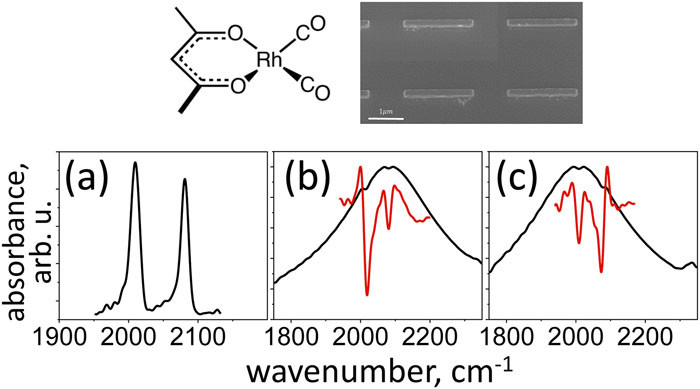Narrowband vibrational molecular transitions interacting with the broadband resonance of infrared plasmonic antennas lead to Fano lineshapes observed in linear (FTIR) and third-order (transient absorption and 2DIR) spectroscopic experiments. Both molecular and plasmonic components are inherently dissipative, and the effects associated with their coupling can be observed, in principle, when measuring the corresponding ultrafast quantum dynamics. We used 2DIR spectroscopy to study the waiting time evolution of quantum coherence excited in the carbonyl stretching modes of rhodium (acetylacetonato) dicarbonyl molecules, which were embedded in an 80 nm-thick polymer film spin-coated on an array of infrared half-wavelength gold antennas. Despite the pronounced Fano lineshapes obtained for the molecular transitions, and up to a four order of magnitude enhancement of the third-order signals, which taken together, indicate the coupling between the plasmonic and molecular transitions, the dynamics of the quantum coherence were identical to that obtained with 3 μm-thick film without the interaction with the plamson mode. This suggests that the coupling rate between the molecular and plasmonic excitations is significantly smaller than the relaxation rates of the molecular excitations monitored in the experiment. Here, the Fano lineshape, observed at the frequency of the molecular transition, can result from the mutual radiation damping of the molecular and plasmon modes.
Authors: Bar Cohn, Amit K Prasad, Lev Chuntonov
Publication date: 2018/4/7
Journal: The Journal of Chemical Physics
Volume: 148
Issue: 13
Publisher: AIP Publishing



